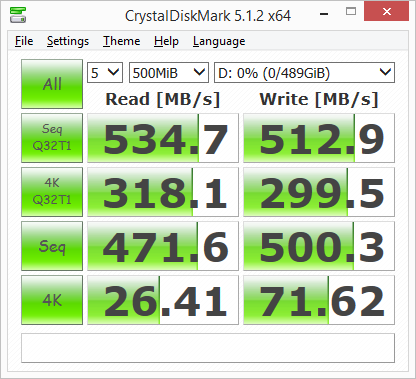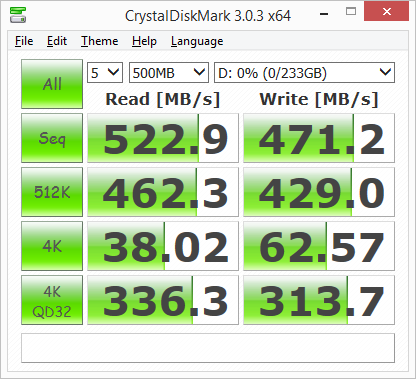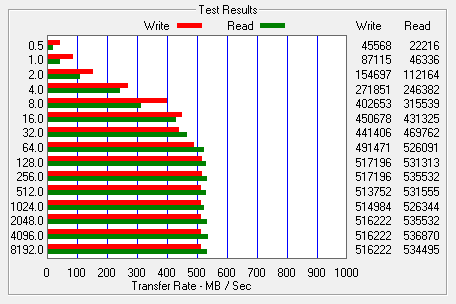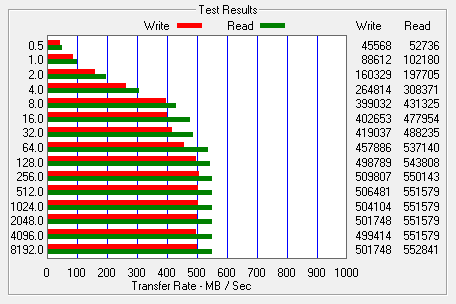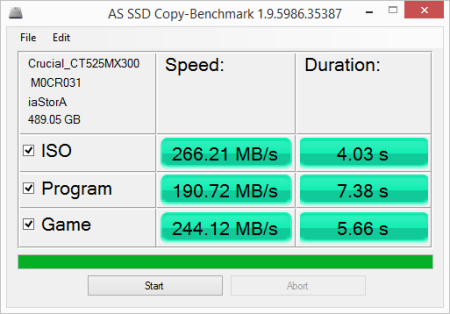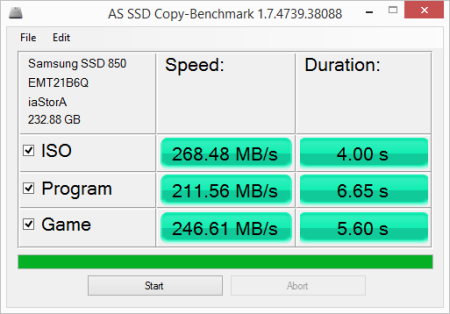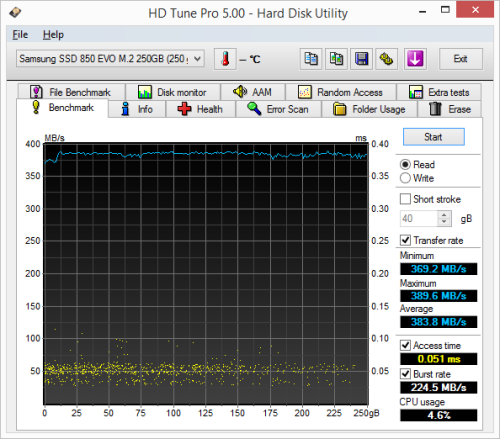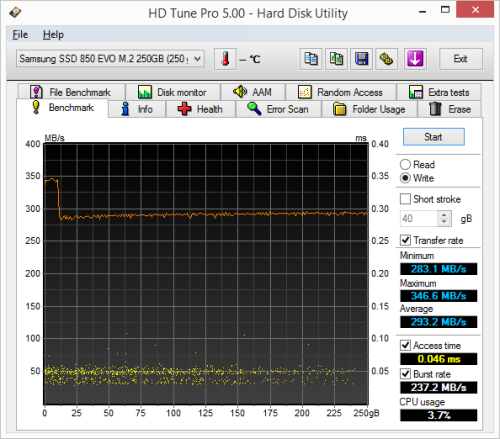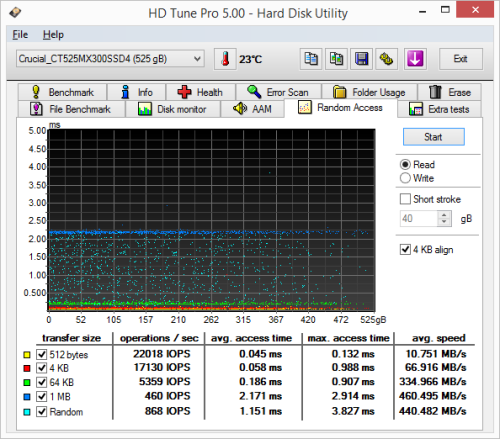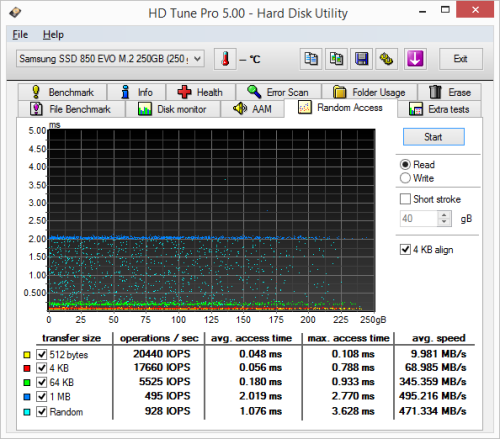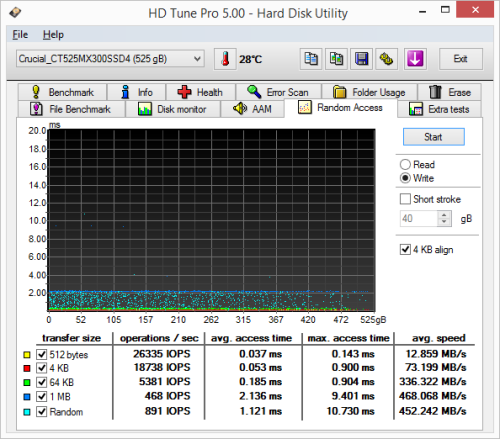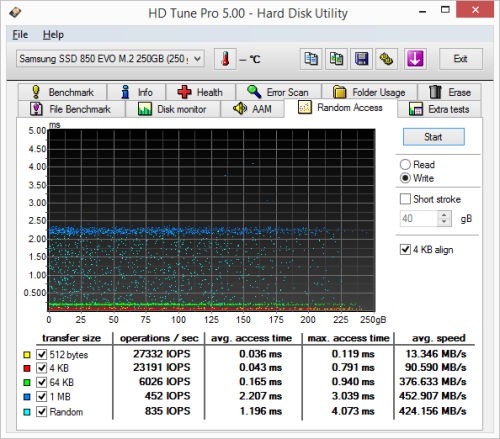

Model: Crucial MX300 M.2 525GB Solid State Drive
Manufacturer: Crucial
Provided By: Reader Donations
Crucial is a global brand of Micron Technology, Inc., one of the largest memory and flash storage manufacturers in the world. The company's product lineup includes award-winning solid state drives (SSDs) and computer memory upgrades (DRAM) for more than 50,000 systems. These products have been qualified and approved by major original equipment manufacturers and every single module has been rigorously tested at the component and module level. Each SSD also undergoes over a thousand hours of prerelease validation testing and hundreds of qualification tests to ensure optimal reliability and performance.
This past summer, Crucial launched its latest mainstream SSD, the MX300. Built for speed and loaded with advanced features, the drive was powered by Marvell's 88SS1074B1 controller and was available with up to 2TB of Micron's 3D TLC NAND. To compensate for the slow write speeds typically associated with this type of NAND flash, the MX300 was equipped with Crucial's Dynamic Write Acceleration technology, which uses an adaptable pool of high speed, single-level cell flash memory to enable faster saves and file transfers.
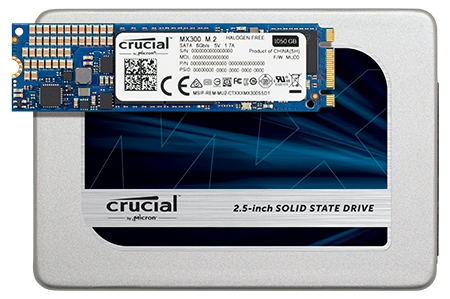
Crucial has now launched the MX300 M.2. Designed for tablets and ultrabooks, this new addition to the MX300 line isn't much larger than a stick of gum. The MX300 M.2 is powered by the same 88SS1074B1 controller found in the 2.5-inch version of the drive and is available with up to 1050GB of Micron's 3D TLC NAND. The MX300 M.2 also shares many of the same features as its full size counterpart. In addition to Dynamic Write Acceleration, it offers AES 256-bit encryption, thermal and power loss protection, TRIM support and active garbage collection. The MX300 M.2 also uses technologies like Data Defense and Redundant Array of Independent NAND (RAIN) to increase security and protection of data to a level that’s not typically found in consumer-class SSDs.
The MX300 M.2 is available in 275GB, 525GB, and 1050GB capacities. For this review, we purchased the 525GB version of the drive which is capable of delivering up to 530 MB/s sequential read and 510 MB/s sequential write speeds as well as up to 92,000 random read and 83,000 random write IOPS.
| Crucial MX300 M.2 525GB Solid State Drive | |||||||||||||||||||||||||||
General Specifications
Performance
Reliability
Environmental
Other Features
|
Needless to say, this is only a taste of what the MX300 M.2 has to offer. To give you an idea of what to expect, we'll take a closer look at Crucial's new SSD and then see how well it performs. Does the MX300 M.2 have what it takes? Can it deliver the performance and features that we've come to expect from Crucial? Keep reading as we find out.
Crucial's MX300 M.2 SSD ships in a simple clamshell similar to what memory modules come packed in. The sticker on top shows the model, capacity and form factor of the drive. Inside the packaging, you'll find the drive, a bag containing a couple of mounting screws and a small piece of paper with a software activation key for Acronis True Image HD.
Physical Features:
The MX300 M.2 uses the 2280 form factor for M.2 (NGFF) SSDs. It measures about 80 x 22 x 2 mm and weighs in at a mere 9g. The drive is also equipped with a B+M edge connector which supports data transfer rates up to 6 Gb/s.
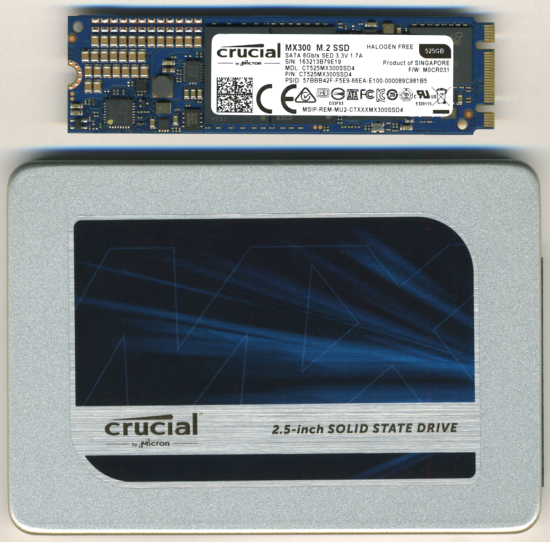
Like the 2.5-inch version of the MX300, the MX300 M.2 uses Marvell's 88SS1074B1 controller. Manufactured using an advanced 28nm CMOS process, the controller features support for 15nm TLC/MLC/SLC and 3D NAND. The 88SS1074B1 also offers low power support with integrated DEVSLP (Device Sleep) as well as Marvell’s third generation NANDEdge error-correcting, low-density parity check (LDPC) technology for superior endurance and reliability.


For the 525GB version of the MX300 M.2, Crucial opted to use Micron's 384Gb 3D TLC NAND flash. Looking at the picture above, you can see that there are two NAND flash packages (384GB and 144GB) on top of the PCB. The drive also has a 500MB Micron LPDDR3 memory chip that is used for caching as well as a number of ceramic capacitors that are part of its power-loss protection.
The test system used in this review was an HP 8200 Elite. The computer came equipped with an Intel Core i5-2400 CPU, 4GB of DDR3 1333MHz memory, Seagate Barracuda 7200.12 ST3250312AS 250GB SATA 6 Gb/s hard drive, NVIDIA Quadro FX580 512MB PCIe graphics card and an Intel 82579-LM gigabit network card. For the operating system, I installed a fresh copy of Windows 8.1 Enterprise.
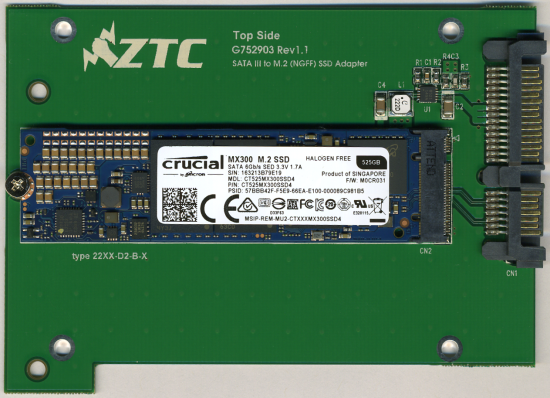
To test the performance of Crucial's MX300 M.2 SSD, I ran a series of benchmarks using CrystalDiskMark, HD Tach RW, ATTO Disk Benchmark, AS SSD, HD Tune Pro, Anvil's Storage Utilities, Iometer and PCMark 8. For comparison, I've also included test results from the Crucial M300, Plextor M7V, PNY CS1311, OCZ Trion 150, PNY CS2211, Plextor M6V, Crucial BX200, OCZ Trion 100, Kingston HyperX Savage, Crucial MX200, OCZ Vector 180, Kingston BX100, Samsung 850 EVO M.2, Samsung 850 EVO mSATA, AMD Radeon R7, Silicon Power Slim S80, Samsung SSD 850 EVO, OCZ ARC 100, SanDisk Ultra II, Crucial MX100, SanDisk Extreme Pro and Samsung SSD 850 PRO.

As I mentioned earlier, the MX300 M.2 is based on Marvell's 88SS1074B1 controller chip. Looking at the screenshot above, you can see that it performs equally well with both incompressible (0%) and compressible (100%) data.
CrystalDiskMark 3.0.3:
First, I ran a few quick tests using CrystalDiskMark. This benchmark tool measures the performance of a storage device by testing its sequential read and write speeds as well as its random read and write speeds using blocks 512K and 4K in size.
According to Crucial, the 525GB version of the MX300 M.2 is capable of reading at 530 MB/s and writing at 510 MB/s. Looking at the screenshot above, you can see that the drive had no problems reaching these speeds in CrystalDiskMark's sequential read and write tests.
HD Tach RW 3.0.4.0:
Next, I used HD Tach to test the MX300 M.2's read, write and burst speeds as well as its seek times and CPU usage.
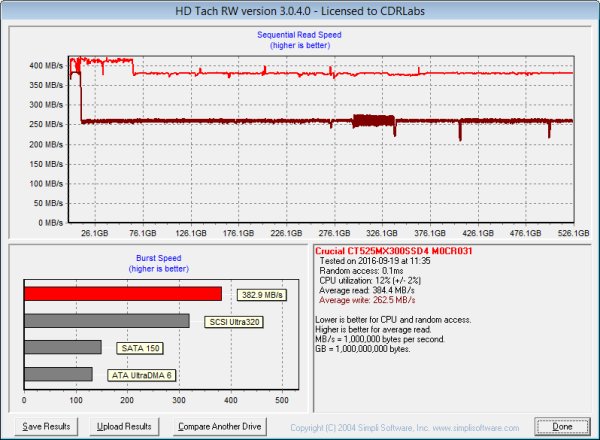
Crucial MX300 M.2 525GB
Looking at the screenshot above, you can see that the MX300 M.2 had average read and write speeds of 384.4 MB/s and 262.5 MB/s respectively, as well as a burst speed of 382.9 MB/s. The screenshot also shows that, like most other TLC-based SSDs, the MX300 M.2 uses some sort of SLC caching (Dynamic Write Acceleration). The drive starts writing at about 375 MB/s and then drops to about 260 MB/s when the write operation exceeds the size of the cache.
ATTO Disk Benchmark 2.46:
I also used ATTO Disk Benchmark to test the MX300 M.2's sequential read and write speeds. The tests are run using blocks ranging in size from 0.5KB to 8192KB and the total length set to 256MB.
When tested with ATTO, the MX300 M.2's read speeds topped out at about 536 MB/s and its write speeds at 516 MB/s.
AS SSD:
AS SSD is a relatively new benchmark designed specifically for solid state drives. The application contains five synthetic tests used to determine the sequential and random read and write performance of a drive.
AS SSD also includes a copy benchmark. This test copies an ISO (two large files), program (many small files) and game (small and large files), returning the speed and duration of each.
HD Tune Pro 5.00:
Next, I ran a series of tests using HD Tune Pro. This hard disk utility measures a drive's performance by testing its sequential read and write speeds as well as its access time, burst rate and CPU usage. For this review, I'm also going to use it to benchmark the MX300 M.2's random read and write speeds, random access times and the number of operations per second.
The MX300 M.2 performed relatively well when benchmarked with HD Tune. The drive had average read and write speeds of 476.2 MB/s and 269.0 MB/s, respectively, and a burst rate of 305.6 MB/s when reading.
When reading 4KB blocks, the MX300 M.2 reached 17,130 IOPS and had an average speed of 66.916 MB/s. The drive was even faster when writing, reaching 18,738 IOPS with an average speed of 73.199 MB/s.
Anvil's Storage Utilities:
Anvil's Storage Utilities is another new benchmark designed with SSDs in mind. The standard storage benchmark measures a drive's performance by testing its transfer speeds, access times and IOPS.

Iometer:
Lastly, I ran a series of tests using Iometer. This tool can be configured to benchmark a number of things. In this case, I used it to measure the MX300 M.2's read and write speeds and the number of operations per second. The tests were run using random bytes and a queue depth of 3.
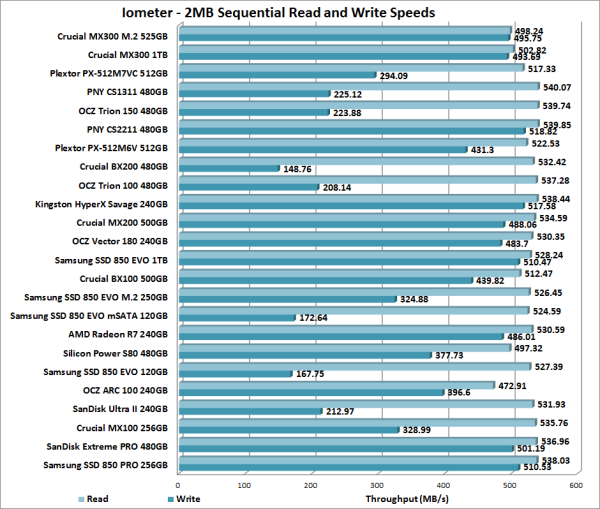
The MX300 M.2's performance was very similar to what we saw in our other tests. The drive was able to read at 498.24 MB/s and write at 495.75 MB/s.

The MX300 M.2 also performed surprisingly well when doing random reads and writes. In our tests, the drive was able to read at 134.54 MB/s and write at a blazing 314.48 MB/s.
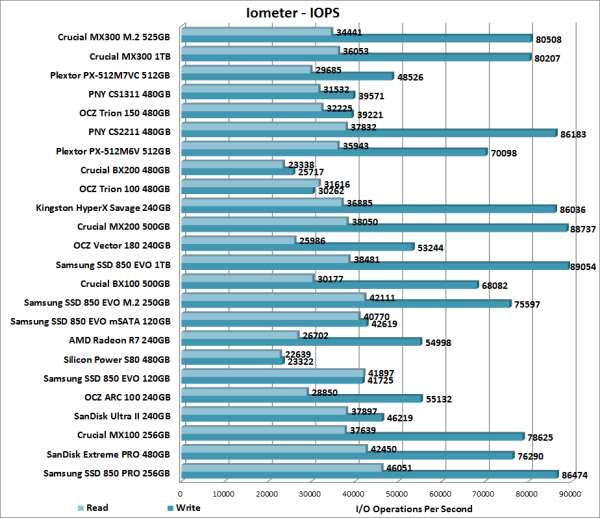
According to Crucial, the 525GB MX300 M.2 is capable of 92,000 IOPS when reading and 83,000 IOPS when writing 4K blocks. In our tests, the drive reached 34,441 random read IOPS and 80,508 random write IOPS. Increasing the queue depth had little impact on the MX300 M.2's random write performance. However, with the queue depth set to 32, the drive was able to reach 90,457 random read IOPS.
Vantage PCMark 8 - Storage Test:
PCMark 8 is a complete benchmark for Windows. It includes five benchmark tests, each designed around a specific scenario. The storage benchmark measures drive performance using real-world traces recorded from Adobe Creative Suite, Microsoft Office and a selection of popular games.

PCMark 8 also includes a consistency test which measures the performance consistency and degradation tendency of a storage system. The test reports the performance level at the start, the degraded steady-state and the recovered state as well as the number of iterations required to reach the degraded state and the recovered state. For this test, we are focusing on the Adobe Photoshop (Heavy) trace and will look at both the bandwidth and latency of the drive
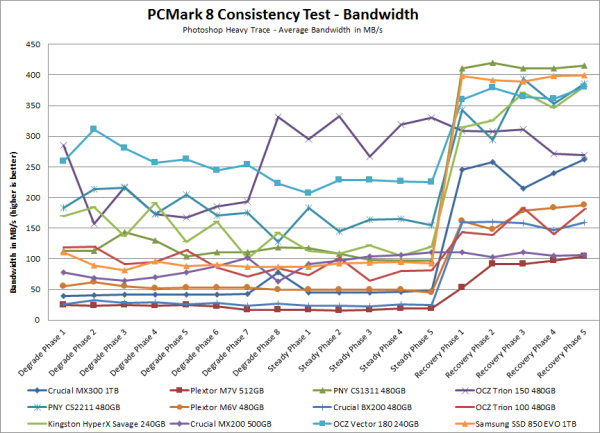

Like the 2.5-inch version of the MX300, the MX300 M.2 didn't do as well as some of the other drives in this test. Its bandwidth dropped below 40 MB/s during the degradation and steady phases, pushing its latency well above the 1000ms mark. The MX300 M.2's performance increased somewhat during the recovery phase. Its bandwidth topped out at about 300 MB/s, putting it in the middle of the pack.
TRIM Performance:
While SSD's offer many benefits, there are some downsides to using flash memory. One of the biggest issues people run into is performance degradation. Over time, an SSD will run out of fresh blocks and will have to write over data the file system has marked as deleted. This procedure is very complicated and can slow an SSD's write speeds considerably.
To fix this problem, most manufacturers have added TRIM support to their SSDs. The TRIM command allows an operating system, such as Windows 7, to tell an SSD which data blocks are no longer in use. Using this information, the drive pro-actively erases these blocks and adds them to the free block pool.
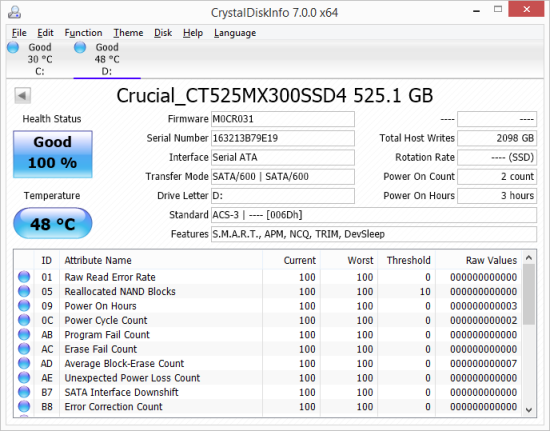
To test the MX300 M.2's TRIM and garbage collection functions, I first put the drive in a "dirty" state. I used Iometer to fill the entire drive and then ran a random write test for 30 minutes. This had little impact on the MX300 M.2's read speed. However, its average writing speed dropped to 28.9 MB/s.
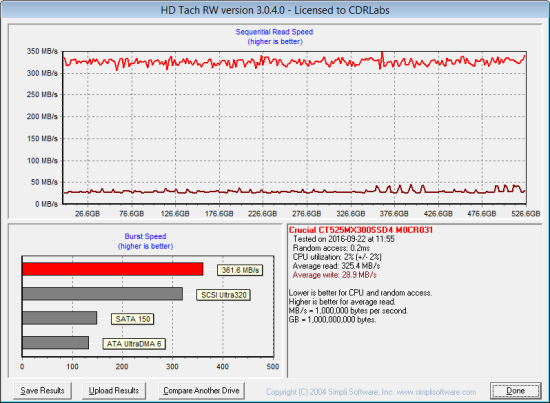
Crucial MX300 M.2 - Dirty
To see how well the MX300 M.2 could recover, I let the computer sit for about 30 minutes and then reran the test. The drive wasn't able to reach the factory fresh performance shown in our earlier tests. However, its average write speed climbed up to 283.5 MB/s.

Crucial MX300 M.2 - After TRIM
Lastly, I used Crucial's Storage Executive software to perform a secure erase (aka sanitize) on the MX300 M.2. With the drive wiped clean, it had average read and write speeds of 375.8 MB/s and 372.4 MB/s, respectively.
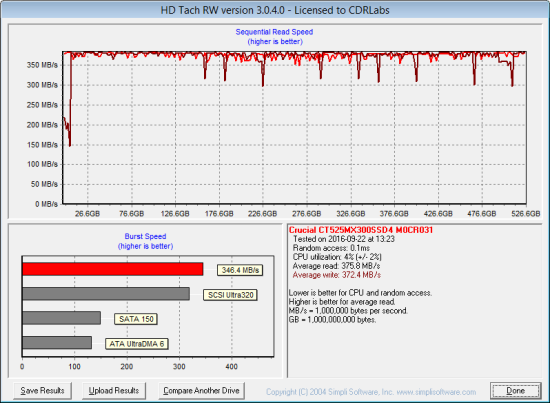
Crucial MX300 M.2 - Secure Erased
Final Thoughts:
Crucial's new MX300 M.2 SSD is a great choice for anyone looking to increase the performance and storage capacity of their mobile device. Like its 2.5-inch counterpart, the drive combines Marvell's 88SS1074B1 controller with Micron's new 3D TLC NAND to deliver good performance, enhanced features and a high level of endurance at a price that won't break the bank. In our sequential read and write tests, the 525GB version of the MX300 M.2 was able to read at speeds as high as 536 MB/s and write at speeds in excess of 514 MB/s. It also did surprisingly well in our random write tests, producing more than 80,000 IOPS at low queue depths.
Fast read and write speeds aren't the only things the MX300 M.2 has to offer. Along with thermal and power loss protection, TRIM support and active garbage collection, the drive features AES 256-bit full disk encryption and is compatible with both the TCG Opal and IEEE 1667 specifications. The MX300 M.2 also uses Dynamic Write Acceleration to enable faster saves and file transfers, and technologies like Data Defense and Redundant Array of Independent NAND (RAIN) to guard against corruption and protect your data. Last, but not least, the MX300 M.2 supports the SATA Device Sleep (DEVSLP) standard which extends the battery life of a device by reducing the drive's power consumption when it's not in use.
The MX300 M.2 is available now in 275GB, 525GB and 1050GB capacities. Prices on Amazon.com currently range from $73 up to $250, with the 525GB version reviewed here going for about $120.

Highs:
- Small M.2 2280 form factor
- Available in 275GB, 525GB and 1050GB capacities
- Good sequential and random read and write performance
- Performs equally well with compressible and incompressible data
- Large DRAM cache
- Dynamic Write Acceleration, Data Defense and RAIN technologies
- AES 256-bit full disk encryption
- TCG Opal and IEEE 1667 compliant
- DEVSLP power mode
- Supports TRIM, SMART and active garbage collection
- Thermal and power loss protection
- Includes Acronis True Image HD software
- 3 year warranty
- Reasonably priced
Lows:
- Write speed drops when SLC cache is full


